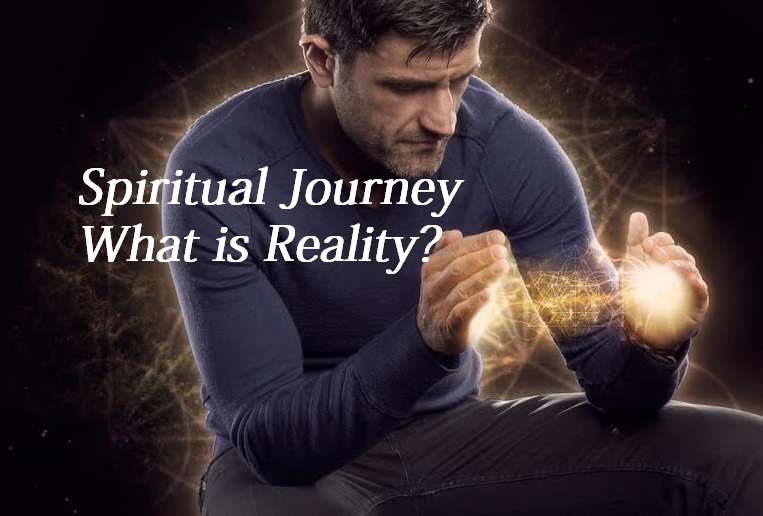In an age where film serves as both entertainment and a conduit for deeper philosophical inquiry, the intersection of Bahá’í teachings with cinematic narratives offers a rich tapestry for exploration. This convergence invites viewers to contemplate profound questions about existence, purpose, and the essence of reality itself. The Bahá’í Faith emphasizes unity, spirituality, and the transformative power of the human experience, making it a fascinating lens through which to analyze film. Herein, we endeavor to delineate the thematic nuances that arise when movies and spiritual reality coalesce, providing a cogent examination of how such integration manifests across various dimensions of storytelling and audience engagement.
Firstly, one must appreciate the potency of narrative storytelling within both film and the context of Bahá’í doctrine. Movies often embody the archetypes of the spiritual journey, echoing key Bahá’í principles such as the inherent oneness of humanity and the quest for truth. Central to Bahá’í teachings is the belief that mankind is on a collective journey towards a unified world, mirroring the odyssey frequently depicted in cinema.
Moreover, films often dramatize pivotal moments of awakening, personal revelation, and ethical dilemmas — themes that resonate deeply with Bahá’í teachings on free will and the moral development of the individual. Notable films such as “The Matrix” or “Life of Pi” unfold narratives that challenge perceptions of reality, urging protagonists to transcend mundane existence and explore higher truths. Such stories exemplify the Bahá’í understanding of reality as a multi-faceted domain, where the material and spiritual realms intertwine.
Furthermore, examining the allegorical aspects prevalent in films may yield insights into the Bahá’í concept of the Manifestations of God. These figures, such as Bahá’u’lláh, serve as spiritual guides, akin to the central characters in transformative films. For instance, films featuring a Mentor or Guide archetype often illuminate the journey of self-discovery and connection with divine wisdom. As audiences engage with these narratives, they may find parallels in the teachings of Bahá’í spirituality, which advocate for the recognition and reverence of divine Messengers throughout history.
Similarly, the theme of duality—a prominent motif in both Bahá’í beliefs and cinematic narratives—deserves scrutiny. In films, characters often grapple with internal and external conflicts that juxtapose light against darkness, knowledge against ignorance. This dualism is reflective of the Bahá’í dogma wherein humanity must navigate the tensions between material desires and spiritual aspirations. Such dichotomies are vividly illustrated in films like “The Lion King,” where Simba’s journey embodies the struggle between self-identity and the collective responsibility towards one’s community.
Moreover, the visual and emotional potency of film serves as a vehicle for exploring Bahá’í social teachings, particularly those emphasizing the importance of community and social justice. Films like “Schindler’s List” and “Selma” resonate with Bahá’í ideals by portraying the quest for justice, unity, and the eradication of prejudice. These narratives compel viewers to reflect on their responsibilities in fostering a more equitable society, a cornerstone of Bahá’í philosophy.
Importantly, the cinematic experience also evokes audience introspection and fosters a sense of interconnectedness—concepts intrinsic to Bahá’í beliefs. As individuals immerse themselves in the thematic depths of a film, they may undergo a transcendental experience, awakening to the collective human experience shared across cultures. This ability of film to engender empathy and understanding dovetails with the Bahá’í imperative of recognizing the oneness of humanity, urging individuals to see beyond individual differences.
Moreover, the emotional resonance that films invoke can serve as a catalyst for spiritual reflection. Soundscapes, visual artistry, and storytelling intricacies allow for an emotional journey that can lead to moments of epiphany and realization. This aligns with the Bahá’í understanding that the human experience is not solely a matter of intellect, but is profoundly intertwined with emotion and intuition. Films that evoke a strong visceral response can lead audiences to insights about their spirituality, encouraging a reevaluation of one’s own beliefs and practices.
To synthesize, the intersection of Bahá’í teachings and cinematic narratives opens a wealth of analytical opportunities. The array of themes ranging from the spiritual odyssey, moral dilemmas, and the duality of existence to the exploration of social justice enhances the viewer’s understanding of both realms. Furthermore, the emotional and visual storytelling inherent in film provides an evocative canvas for reflection on the principles of Bahá’í spirituality. As one contemplates the rich overlap of these domains, it becomes increasingly evident that when movies articulate the nuances of spiritual reality, they contribute significantly to the discourse on human purpose and interconnectedness.
In conclusion, the confluence of Bahá’í teachings and film illustrates the power of storytelling as an instrument of spiritual exploration. Through this medium, profound universal truths can be communicated, urging audiences to reflect on their own lives and the broader societal tapestry. The ongoing dialogue between cinema and spirituality not only enriches the art of film but also amplifies the Bahá’í commitment to fostering understanding, unity, and purposeful living. Thus, as we engage with cinematic narratives, we are invited into a profound dialogue between the material and spiritual realms, enriching our comprehension of both the world and ourselves.
